This study day was one of the most-anticipated in recent SEMFed memory.
Norwich Castle has recently fully re-opened after completion of the project Royal Palace Reborn. The project has totally transformed the Norman keep, and we have been eagerly keeping up with developments over the last few years. A documentary about the redevelopment, The Castle: Rebuilding History, is currently available on Channel 4.
We last visited Norwich Castle in July 2023, when the keep was still full of scaffolding, and in our spring online study day this year we heard from Andrew Ferrara about the plans for digital engagement in the new galleries.
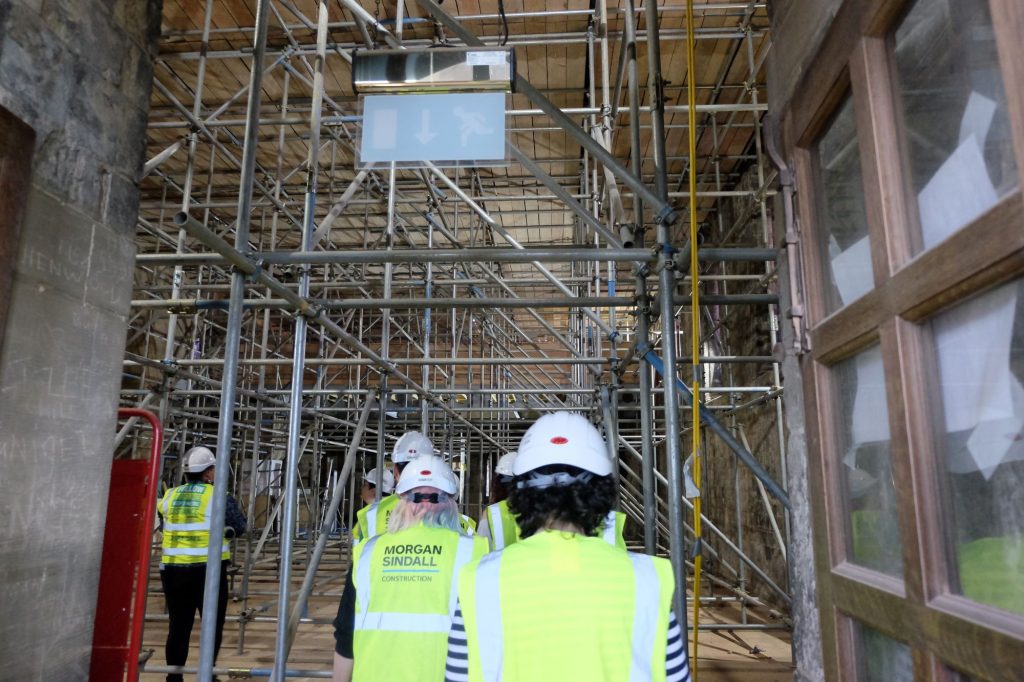
We are really grateful to Hannah Jackson, Project Manager for Royal Palace Reborn at Norwich Castle for showing us around the new spaces.
We began our tour in the new entrance hall. This is a radical change from the previous set up – much more spacious and light, and with unrivalled views of the exterior of the Castle keep, which was previously completely hidden from view once you entered the museum.
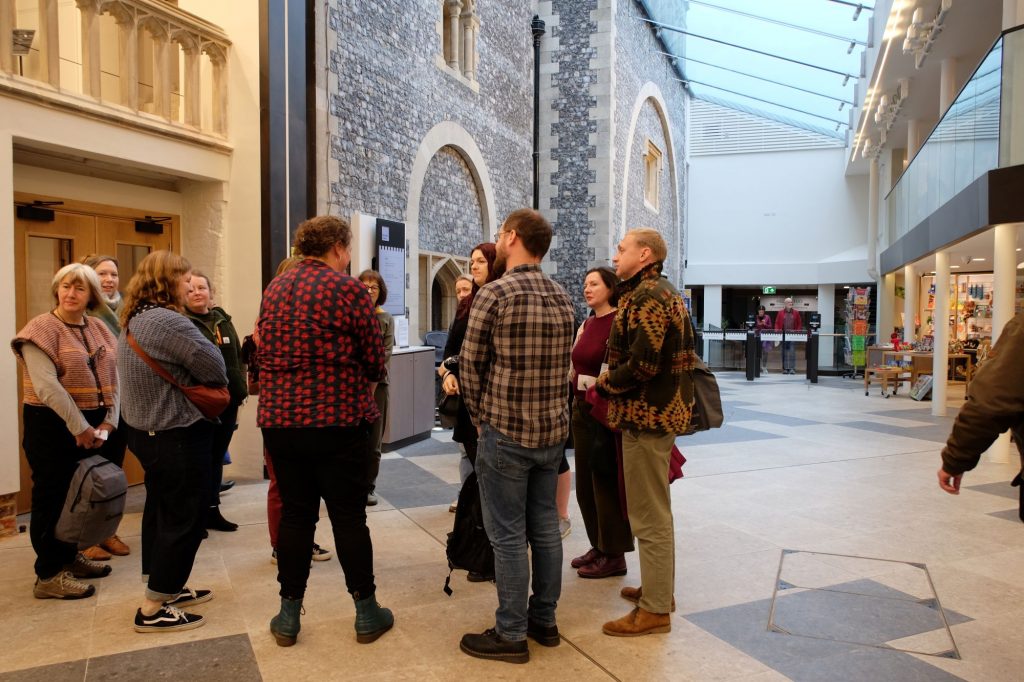
From the entrance hall we made our way up a staircase to the original first-floor entrance to the keep, and surely one of the most magnificent doors we’re ever likely to encounter. This new way into the keep reinstates the original route that Norman visitors would have followed, taking you into the Great Hall.
The door itself is enormous, and provides a first hint of what is to come. The bright blue colour of the leather covering of the door is initially surprising,
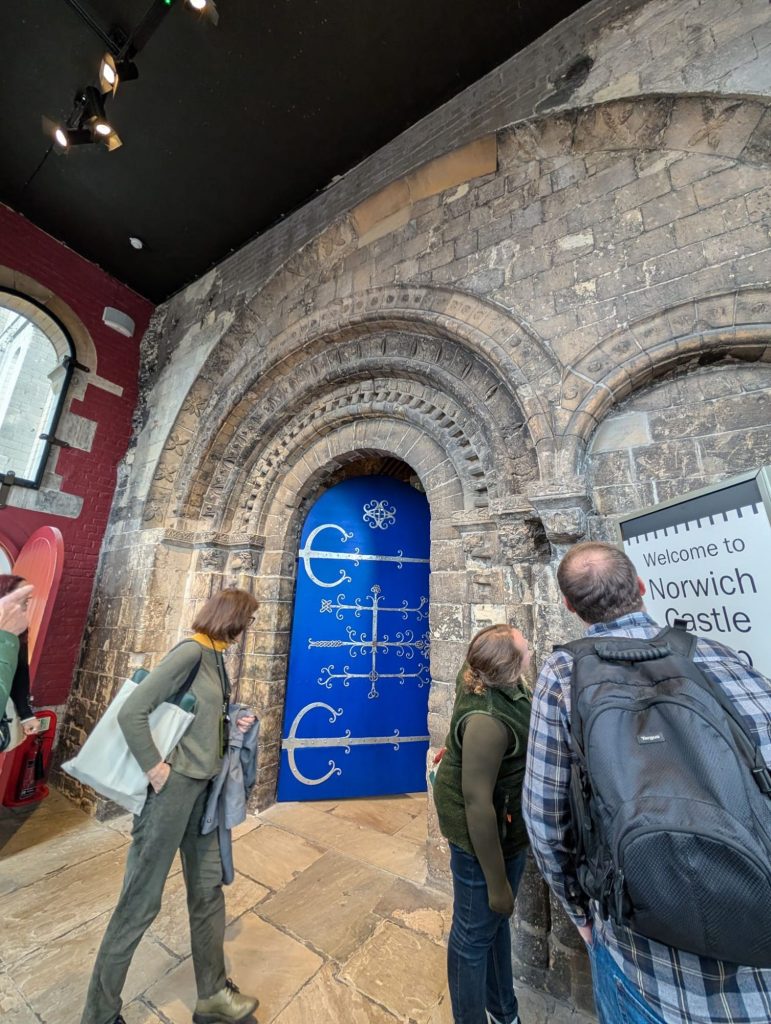
Having seen the making of this door on the museum’s social media and in the documentary, seeing it in person almost felt like meeting a celebrity.
The metal work is all hand-forged and the intricate designs are inspired by surviving doors of the period.
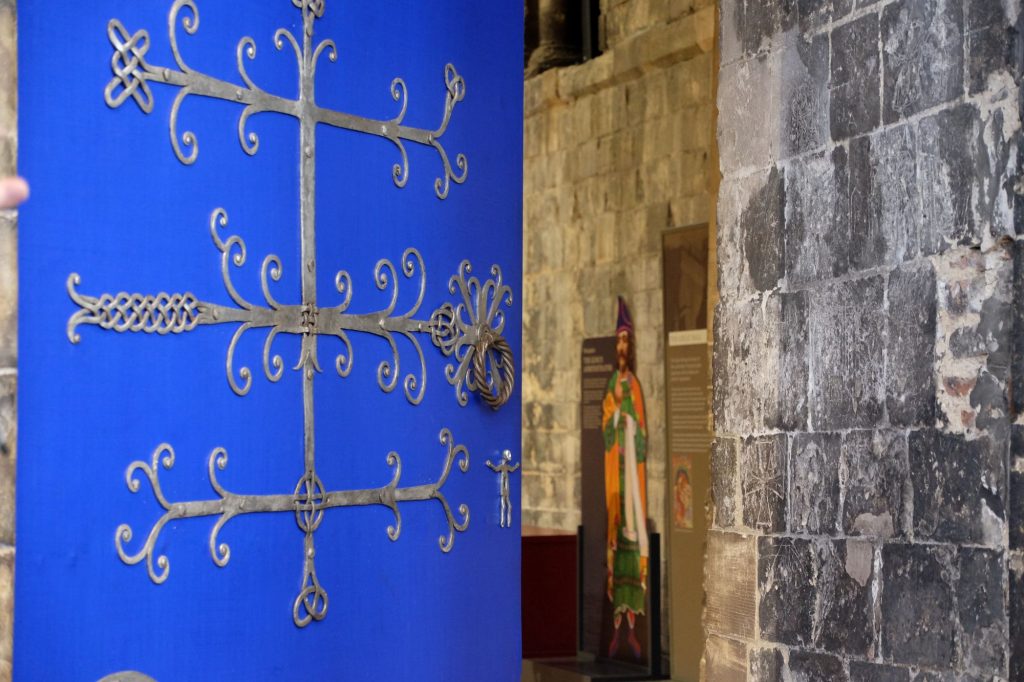
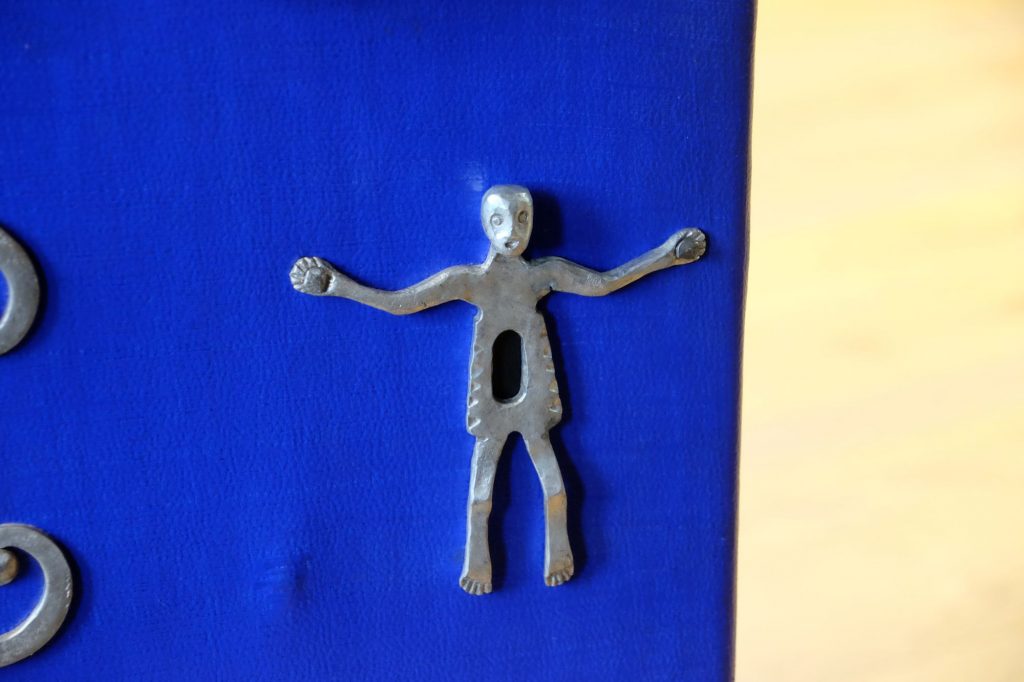
The inside of the keep has been reconfigured as it would have been when it was first built as a Norman royal palace, with recreations of the Great Hall, Great Chamber, and king’s chapel.
The Great Hall is a large space with dining tables set up facing a dais set with thrones, and textile hangings on the walls. All of the textiles throughout the spaces have been handstitched over the last several years, inspired by Norman designs.
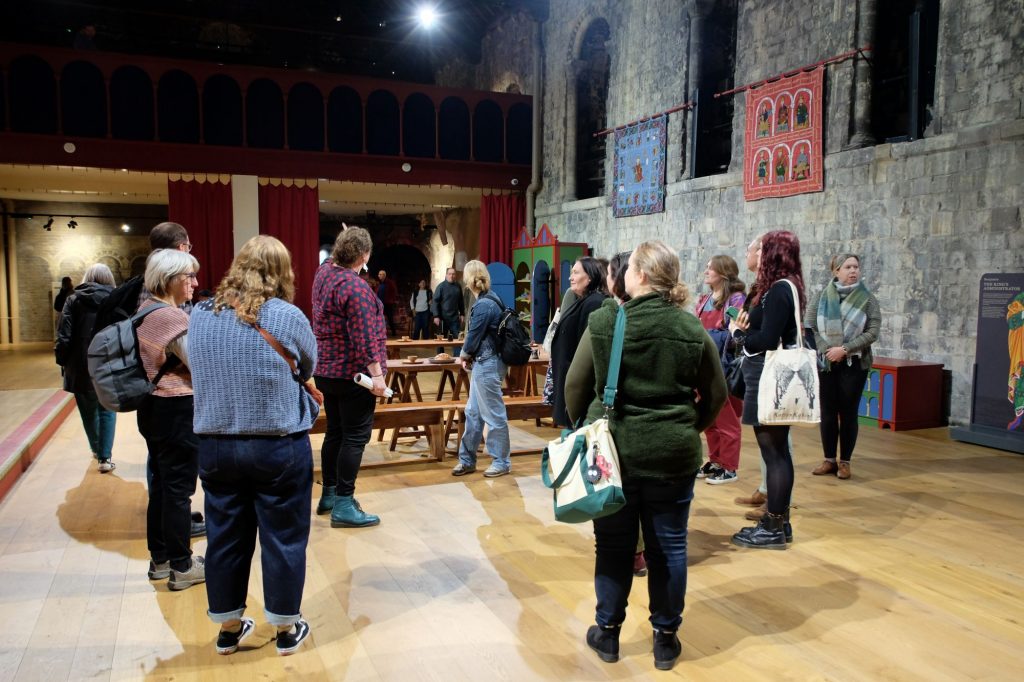
The Great Hall is also where two spectacular light shows take place at set times throughout the day. Each one lasts a few minutes, with one telling the story of the development of the castle, and the other looking at the wider story of medieval Norwich.
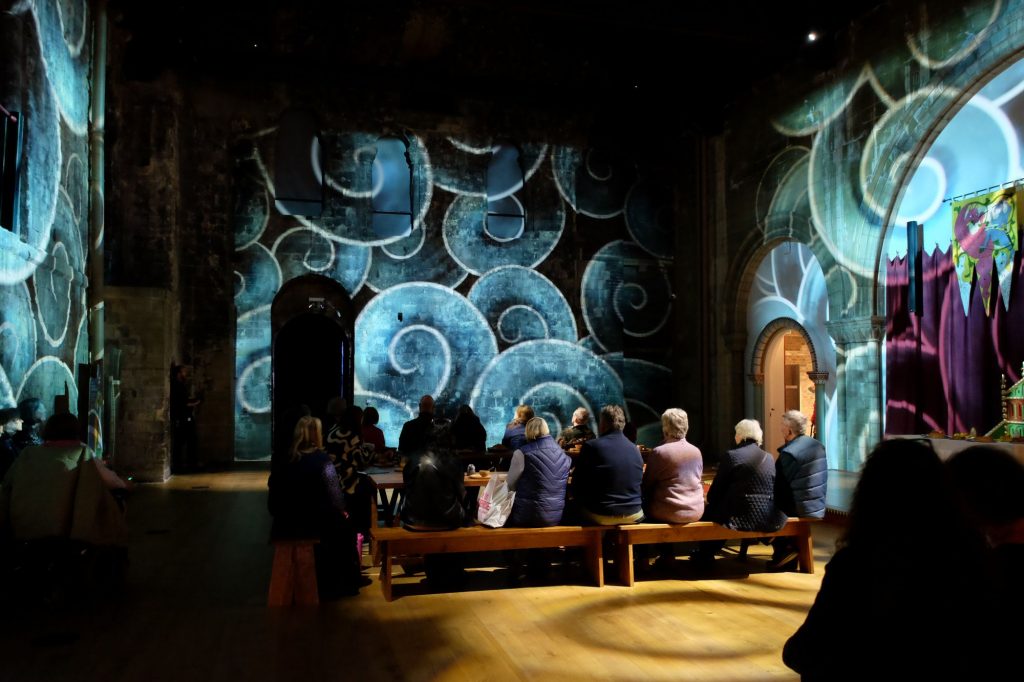
These spaces also feature free-standing interpretation panels, some of which inform visitors about the room they are in, and others which focus on the people who lived and worked there.
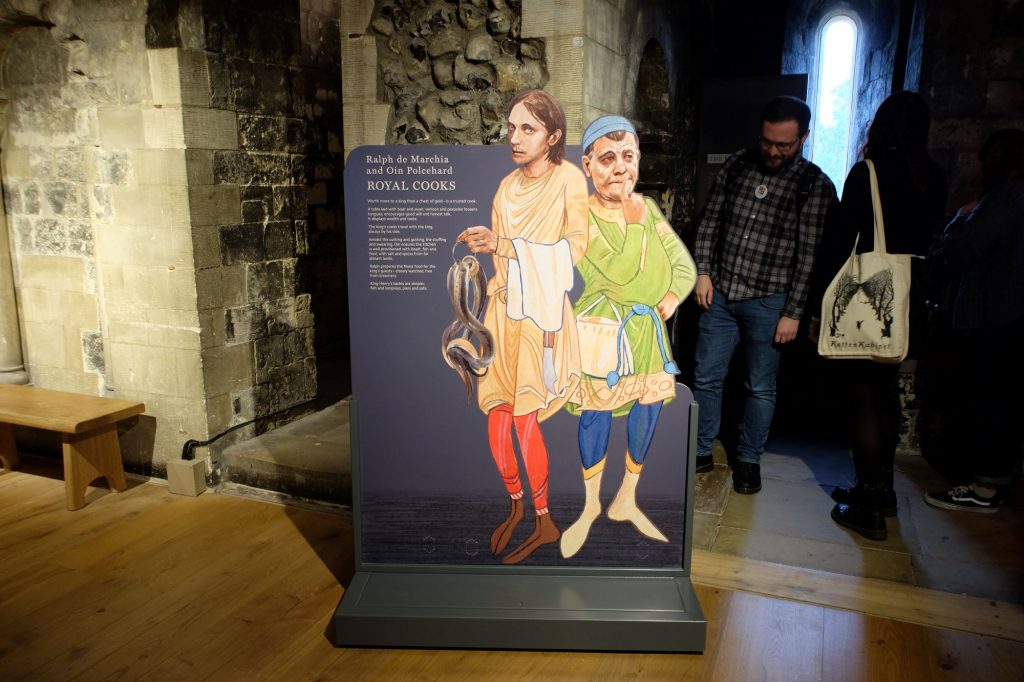
The Norman-style interiors are surprisingly colourful and bold. As the castle website explains:
‘We are used to seeing Norman interiors, like Norwich Cathedral, as plain stone. Surviving furniture from the early medieval period has often lost its decorative paintwork. However, Norman (or Romanesque) style was actually very colourful and ornate. We know this from period manuscripts and archaeological evidence. The Normans loved a bit of bling!
Walls were painted in elaborate patterns. Furniture was colourful and sometimes gilded. Doors featured fancy ironwork scrolls. Colourful banners and tapestries hung on walls. What you’ll see in the royal palace reflects this Norman taste for decoration. It shows the castle’s high status. Every element has been carefully researched and expertly crafted. This is to provide as authentic an experience as possible.’
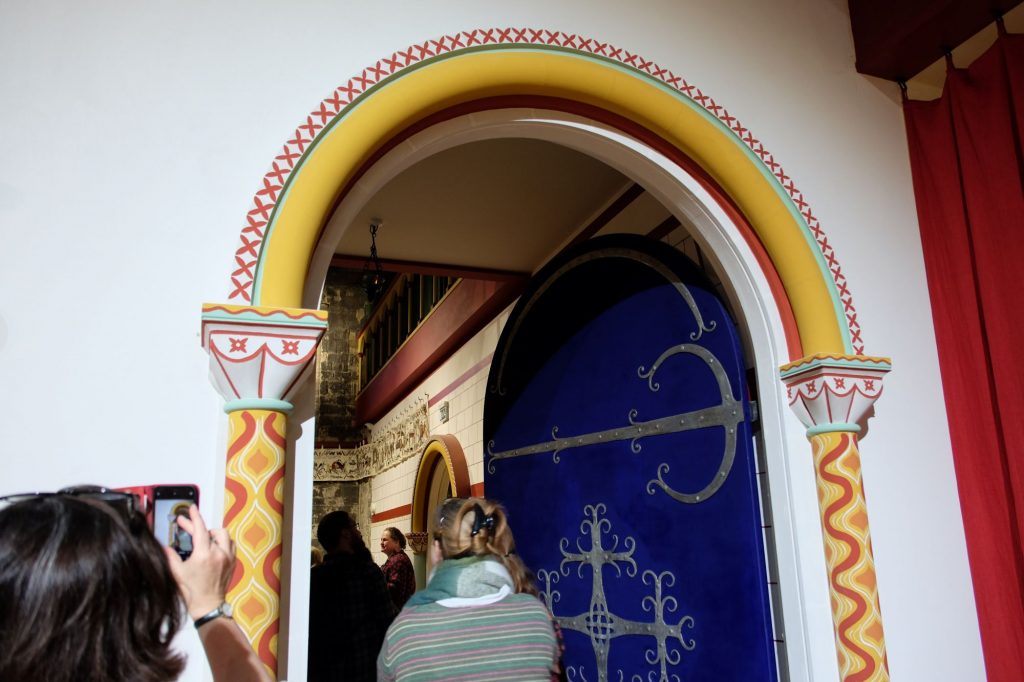
The Great Chamber is home to the Norwich Tapestry, and 18-metre embroidery in the style of the Bayeux Tapestry which tells the story of two East Anglian rebellions against Norman rule. It has taken thousands of hours across 8 years to complete.
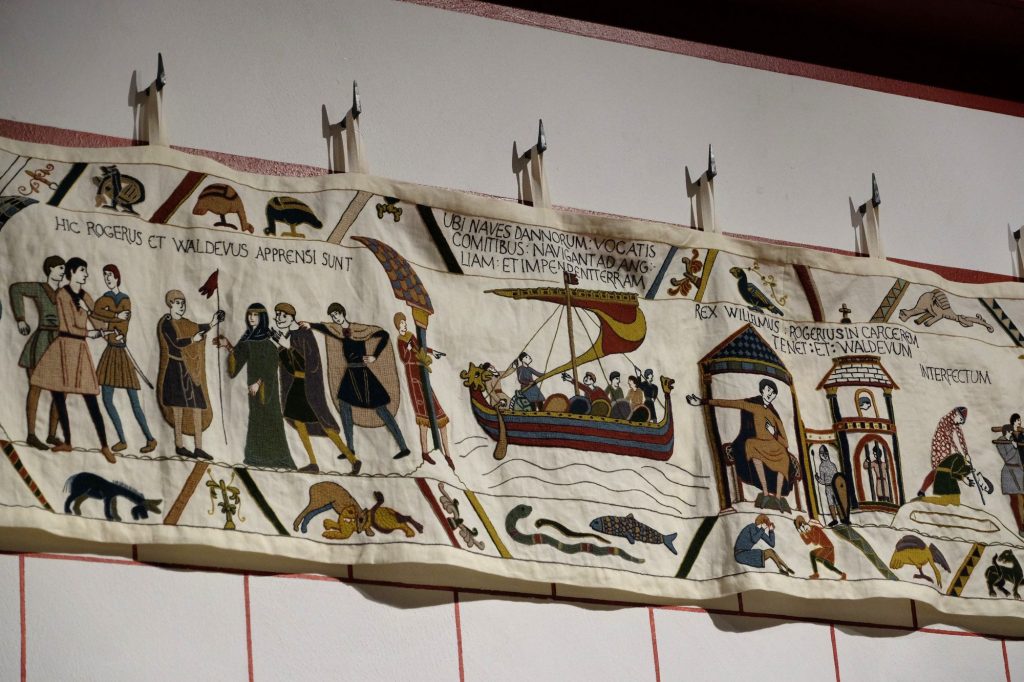
Throughout the keep you will find graffiti trail, drawing attention to some of the thousands of images and words etched into the stone over the centuries.
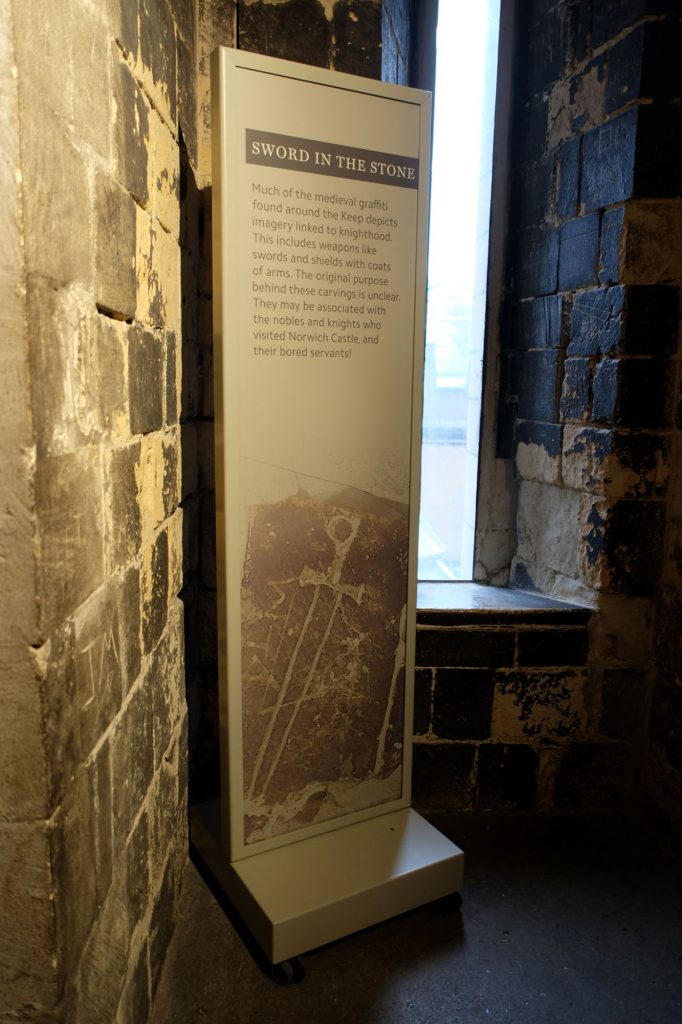
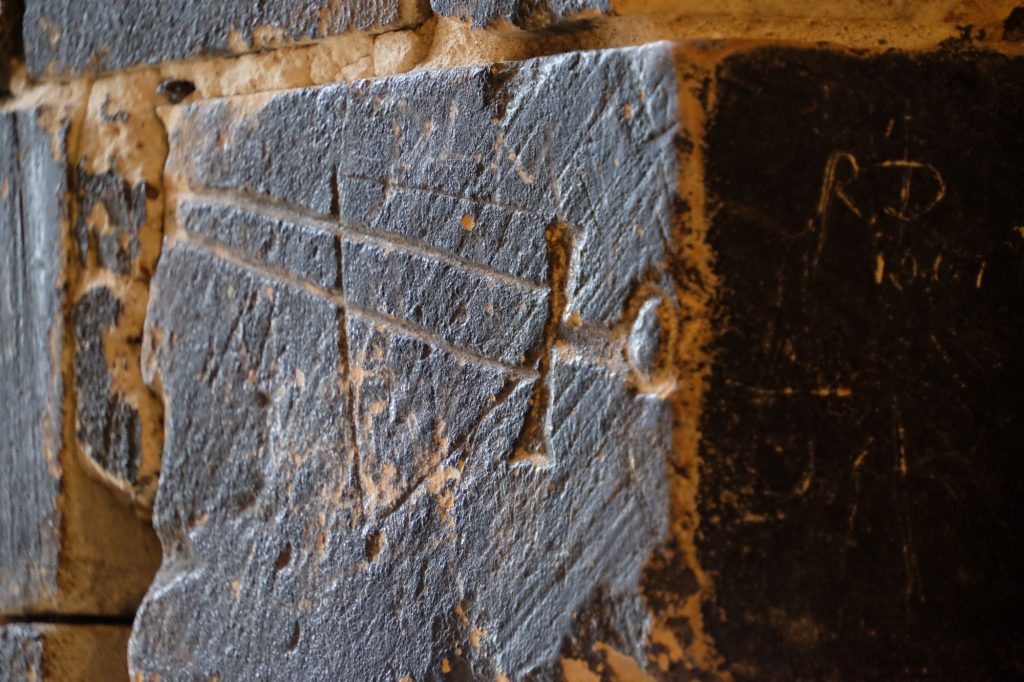
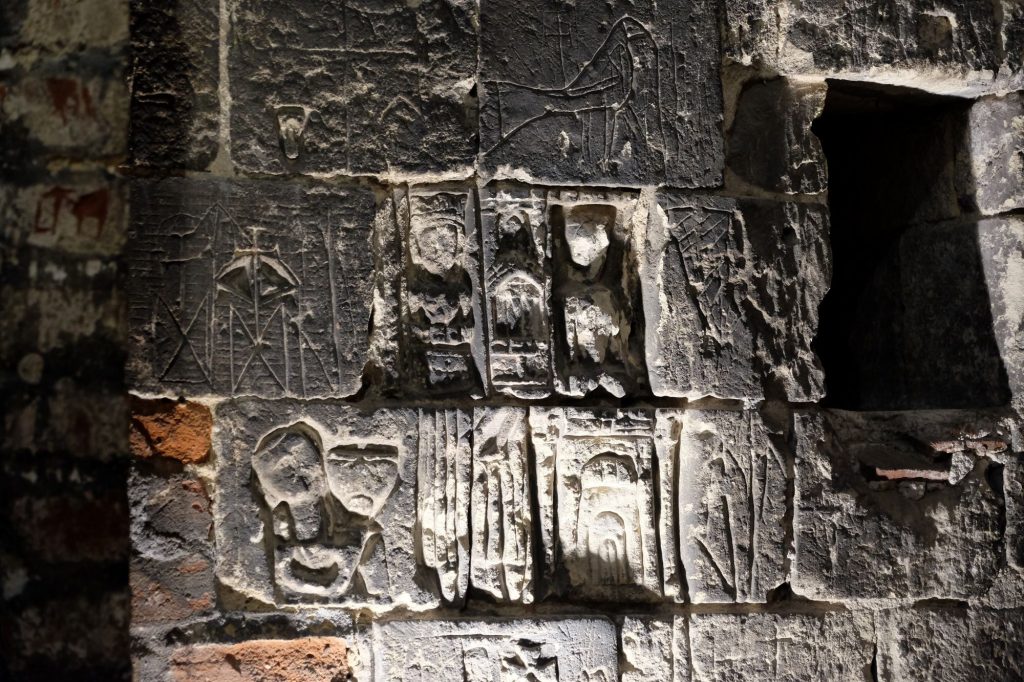
One key new feature of the redevelopment is that for the first time all visitors have access to every level of the keep, including the battlements, with views across the city of Norwich. The battlements can be reached by stairs or lift (although there have been some teething problems with the platform lift which does the last bit of the step-free journey).
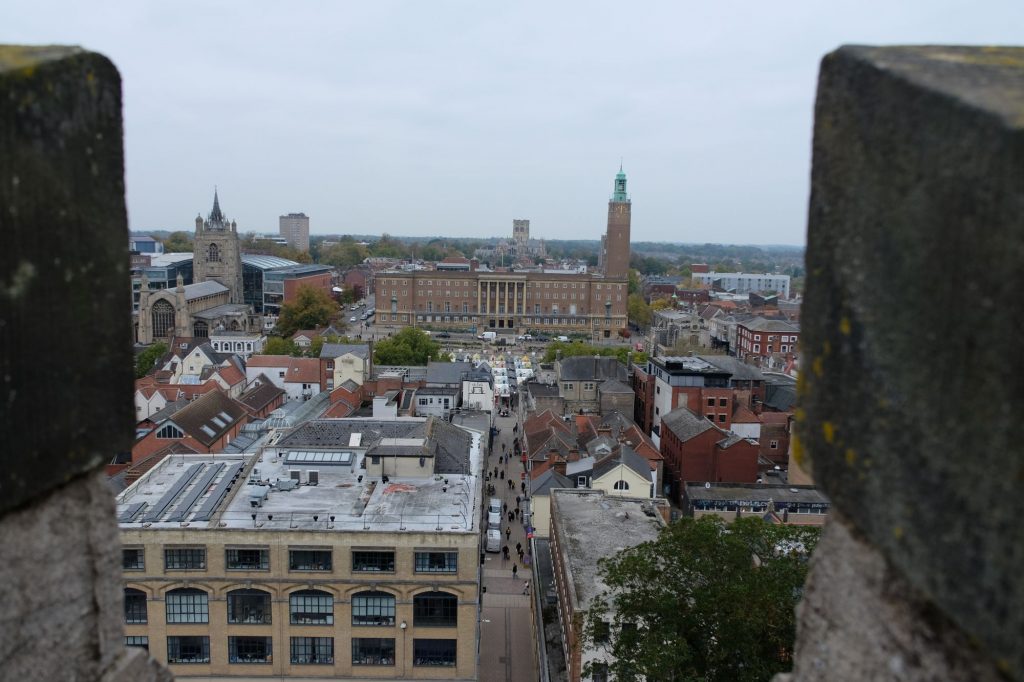
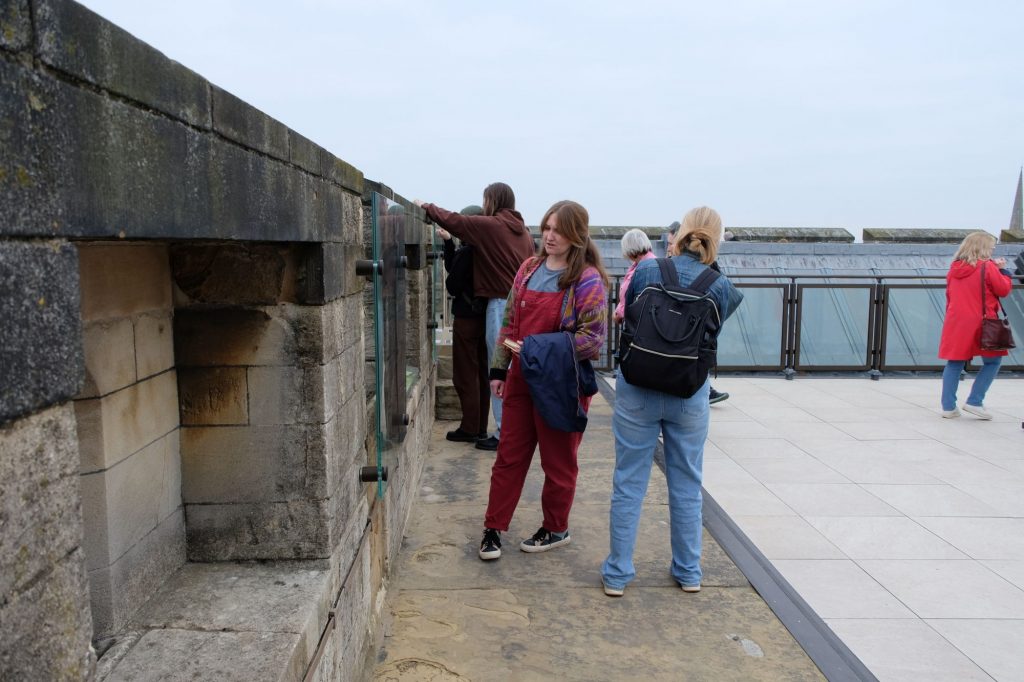
The redevelopment also includes The Gallery of Medieval Life, a collaboration with the British Museum. The gallery features over 900 medieval objects, mostly drawn from Norfolk Museums’ collections but with over 50 from the British Museum. The gallery is organised into objects relating to those who worked, those who fought, and those who prayed. They tell local Norfolk stories and also place Norfolk and East Anglia within the wider world of medieval Europe.
This is a much more traditional museum gallery experience, with beautiful object displays and light-touch interactives.
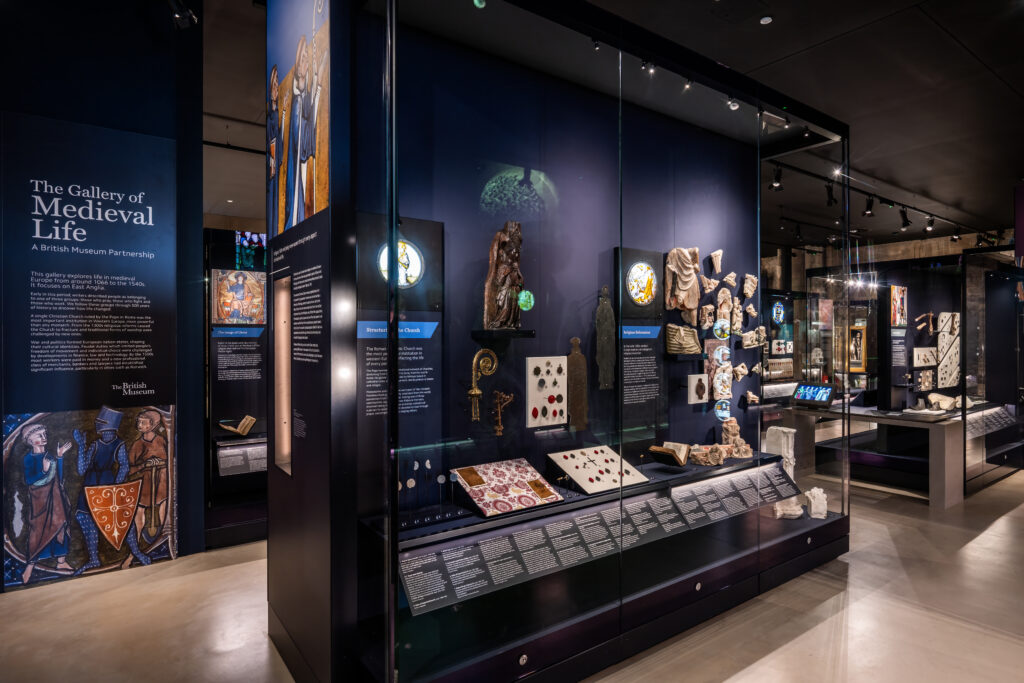
The redevelopment is a bold and innovative reimagining of Norwich Castle keep, and clearly a huge amount of effort, knowledge, and skill has been poured into it. A huge thank you to Hannah Jackson for showing us round, we’ll all be back!